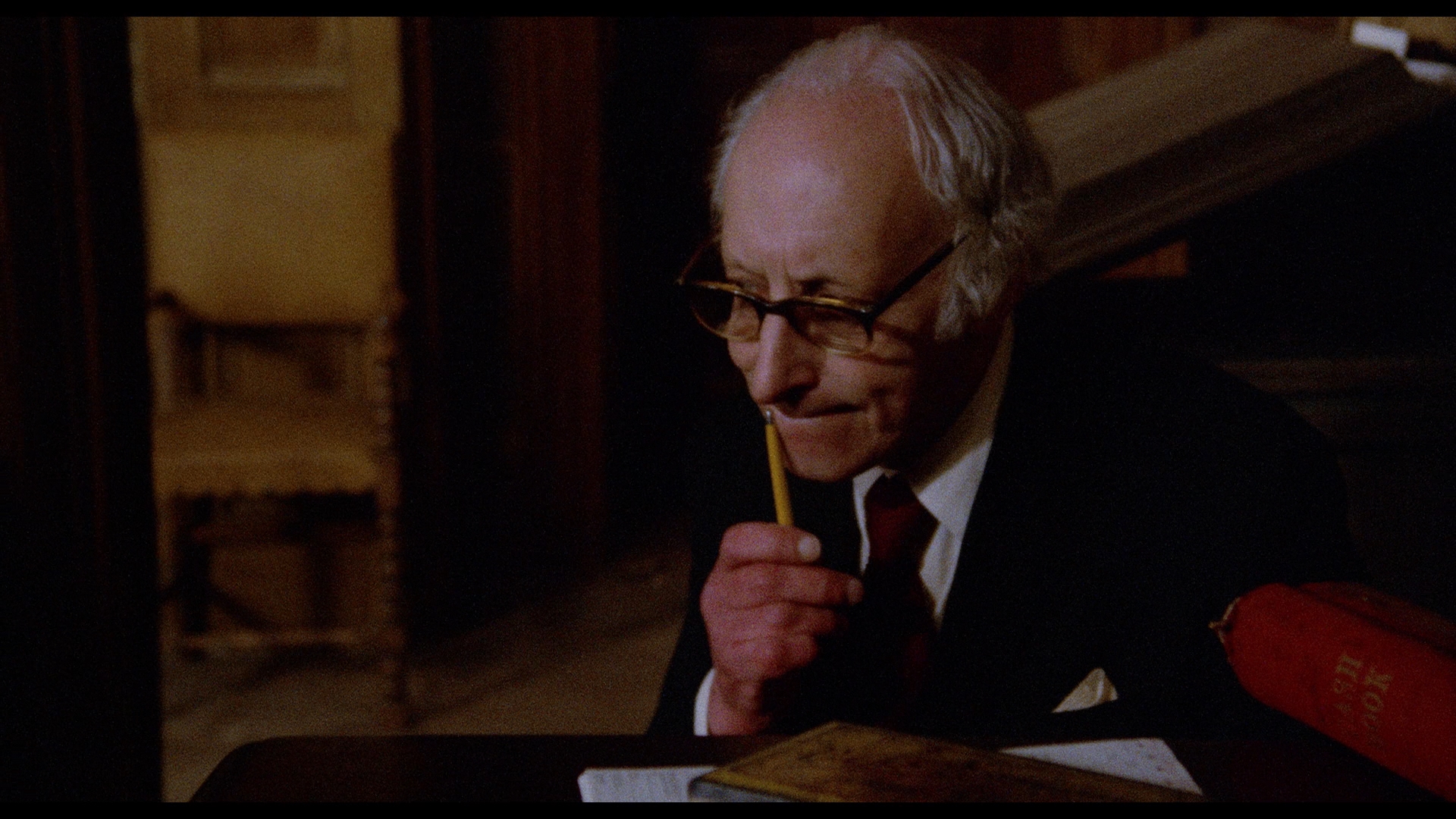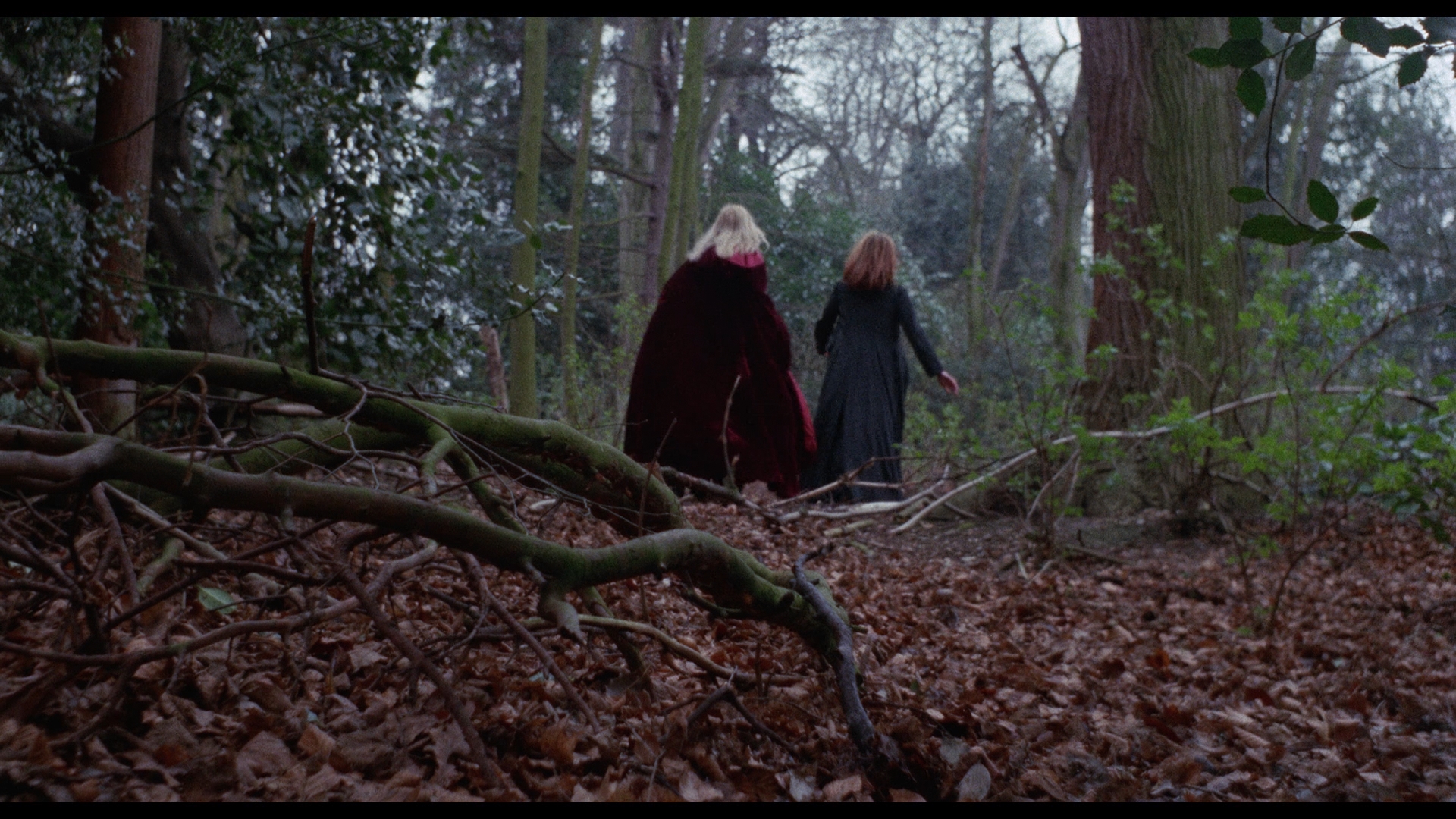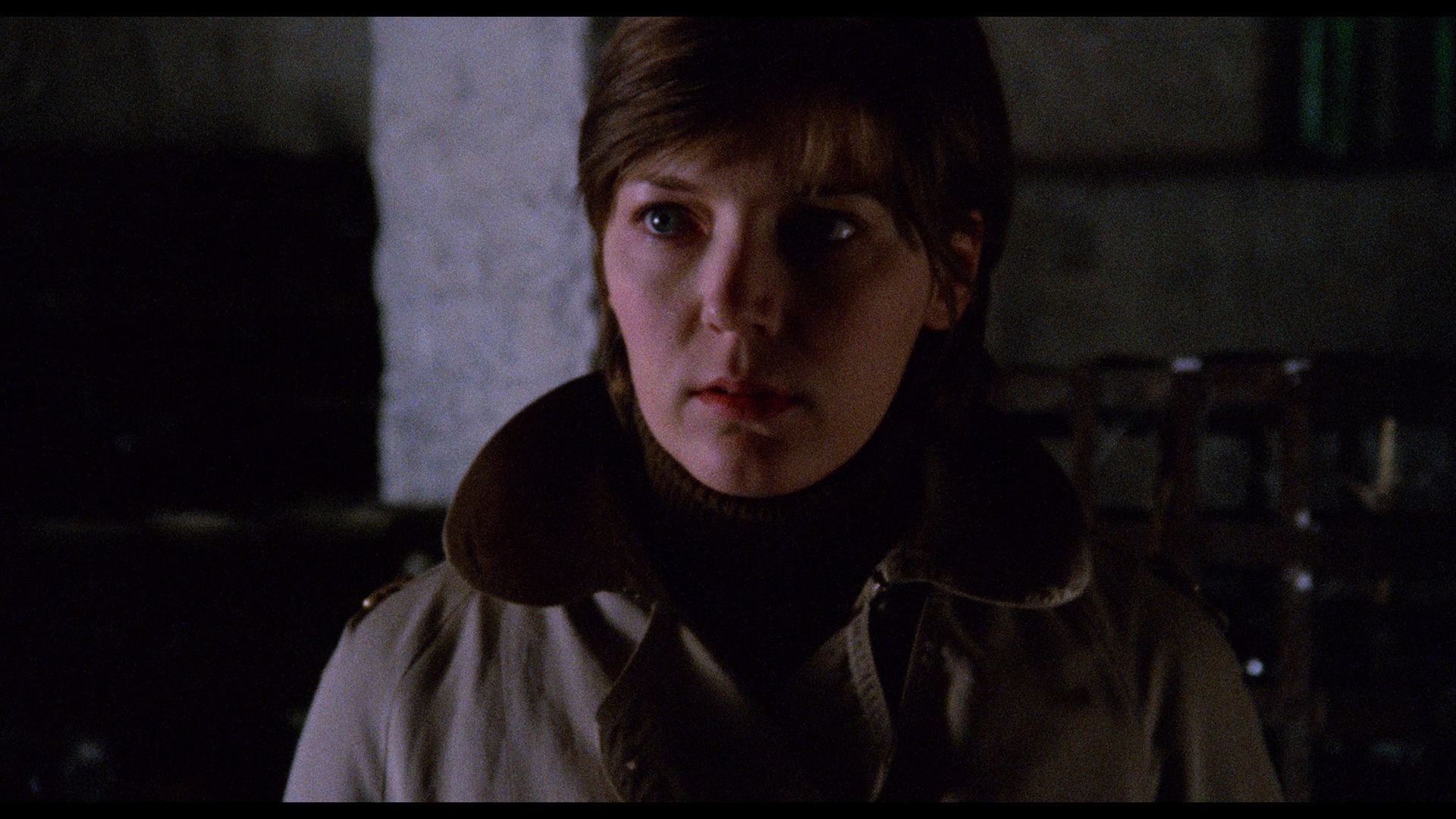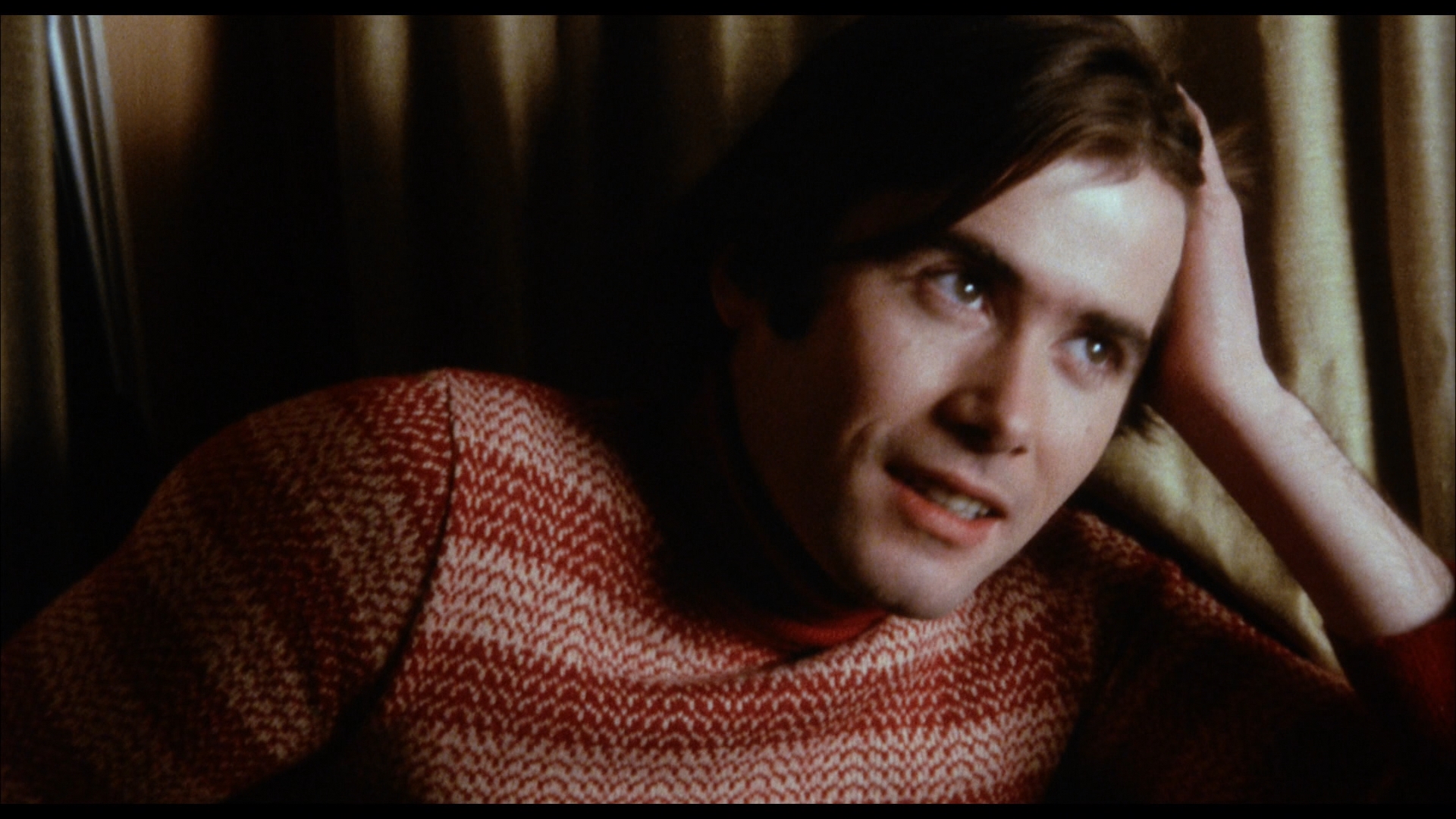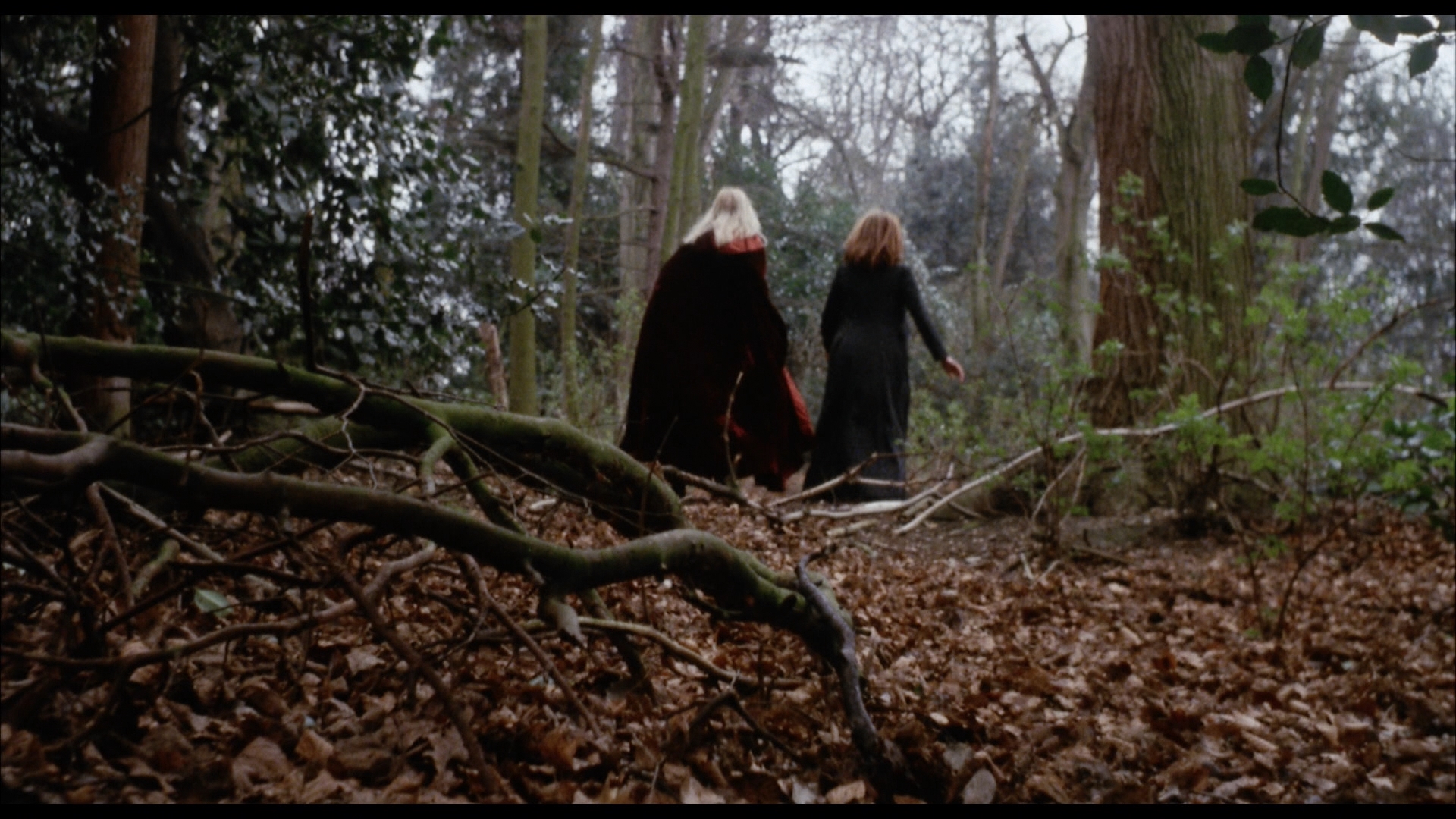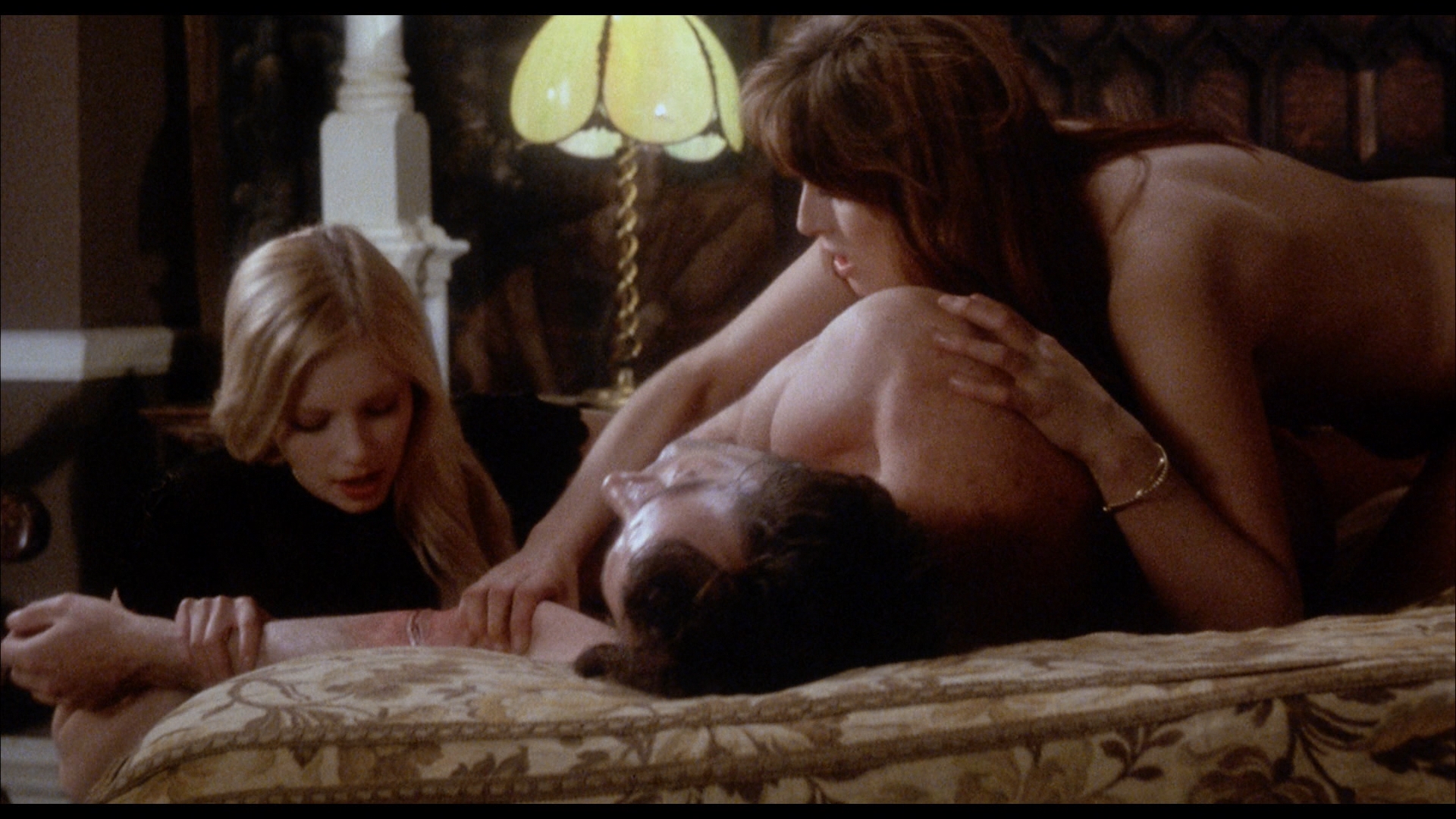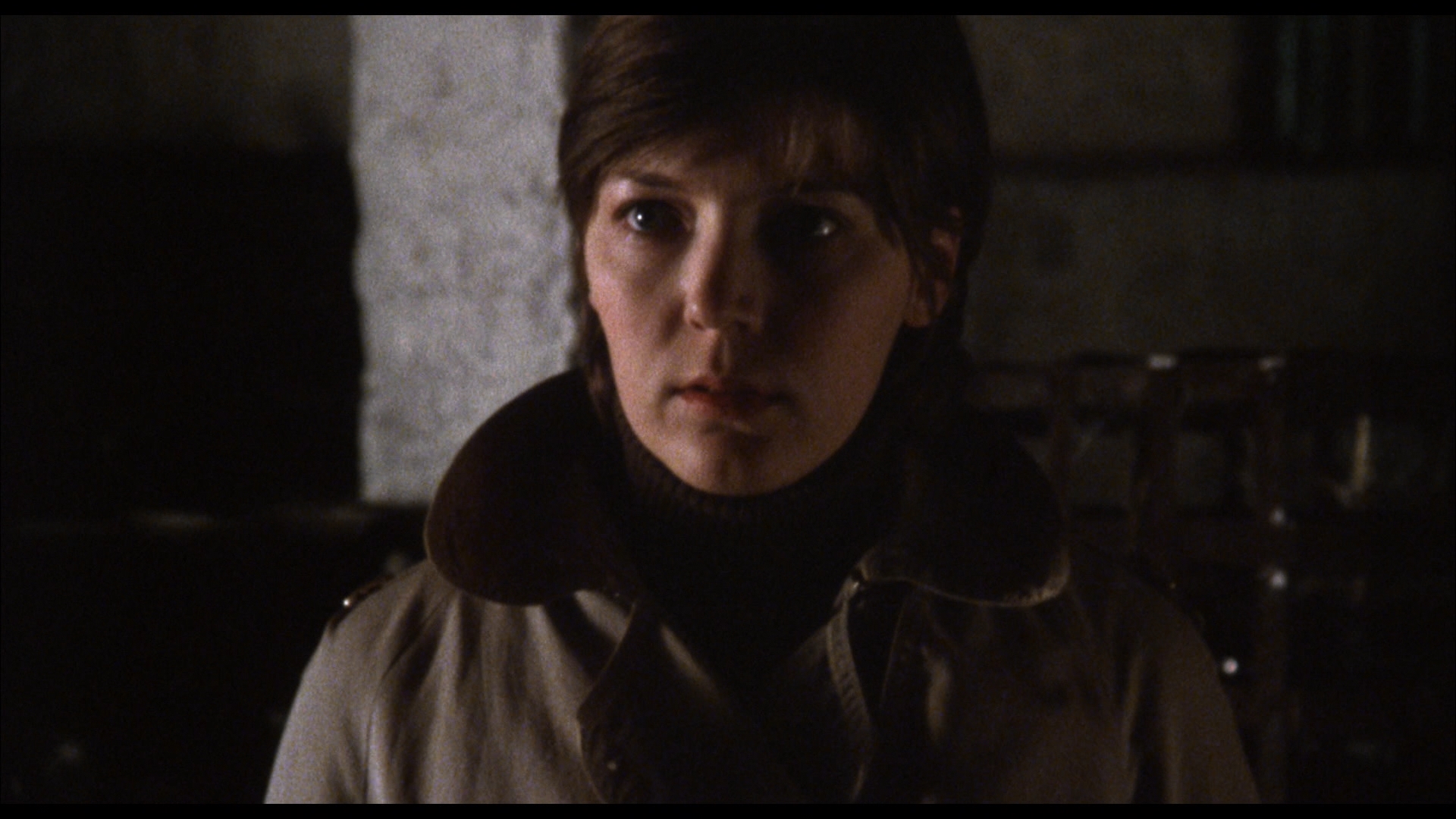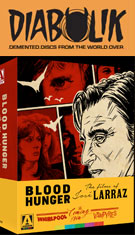
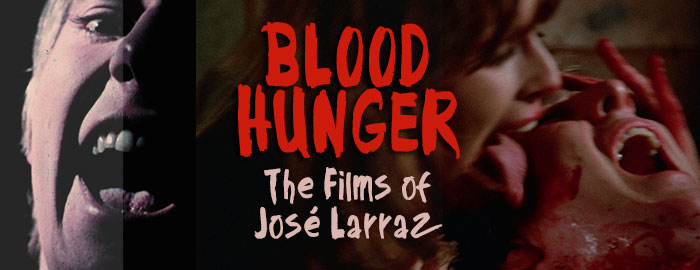
WHIRLPOOL
Color,
1970, 86 mins. 42 secs.
Directed by José Ramón Larraz
Starring Karl Lanchbury, Vivian Neves, Pia Andersson
Arrow Video (Blu-ray) (US/UK R0 HD) / WS (1.66:1) (16:9)
VAMPYRES
Color, 1974, 87 mins. 35 secs.
Directed by José Ramón Larraz
Starring Marianne Morris, Anulka, Murray Brown, Brian Deacon, Sally Faulkner
Arrow Video (Blu-ray) (US/UK R0 HD), Blue Underground (DVD & Blu-Ray, US R0 NTSC/HD) / WS (1.85:1) (16:9) / DTS-HD 7.1/DD5.1
THE COMING OF SIN
Color, 1978, 84m.
Directed by José Ramón Larraz
Starring Patricia Granada, Lydia Zuaso, Rafael Machado
Arrow Video (Blu-ray) (US/UK R0 HD) / WS (1.85:1) (16:9), Pagan (UK R0 PAL) / WS (1.78:1)
A 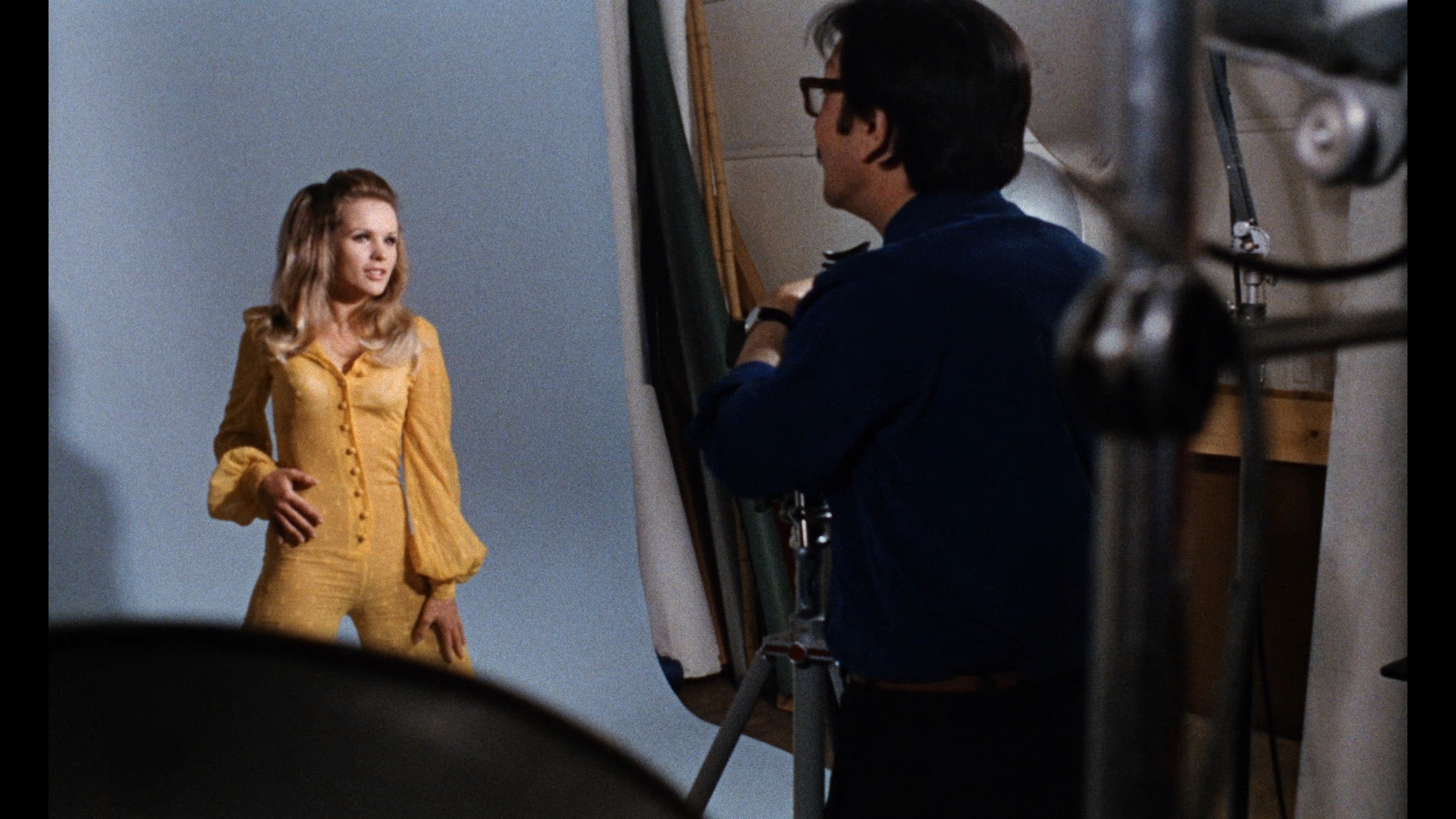 fascinatingdirector whose
fascinatingdirector whose  reputation seems to grow every year, Spanish-born José Ramón Larraz first made his mark with a string of perverse shockers made in England interspersed with the occasional, more obscure gig back in his native country. His debut feature, Whirlpool, was picked up for American distribution by Jerry Gross and given an early X rating (easily in R-rated territory now), then followed in quick succession by Deviation, The House That Vanished, Symptoms, and Vampyres before he stayed with Spain permanently until his death in 2013. Three of his films have been collected in a 2019 Blu-ray set by Arrow Video as Blood Hunger: The Films of José Larraz, offering a welcome opportunity to enjoy a trio of films from different points in his career.
reputation seems to grow every year, Spanish-born José Ramón Larraz first made his mark with a string of perverse shockers made in England interspersed with the occasional, more obscure gig back in his native country. His debut feature, Whirlpool, was picked up for American distribution by Jerry Gross and given an early X rating (easily in R-rated territory now), then followed in quick succession by Deviation, The House That Vanished, Symptoms, and Vampyres before he stayed with Spain permanently until his death in 2013. Three of his films have been collected in a 2019 Blu-ray set by Arrow Video as Blood Hunger: The Films of José Larraz, offering a welcome opportunity to enjoy a trio of films from different points in his career.
First up is Whirlpool, which has been an elusive title for many decades with no commercial home video release of any kind until this point and an impossible film to see at all apart from a very dupey, timecoded bootleg VHS. The Larraz style is already unmistakable here over the idyllic countryside opening as photographer Theo (Larraz U.K. regular Lanchbury) rows across a lake to the accompaniment of a haunting score by the great Stelvio Cipriani. Theo lives in the middle of nowhere in a modest home with his lesbian "aunt" (though not by blood), Sara (one-shot actress Andersson), who scopes out models for his camera. The latest one is Tulia (Neves), who soon starts an affair with Theo and starts asking questions about Rhonda,  a missing Irish girl whose presence seems to haunt the entire house. Things quickly get more perverse as Theo and Sara conspire to lure Tulia into a threesome and end up staging a molestation in the middle of the woods for a photo shoot, but that's just the start of an arrangement that can't possibly end well... especially given Theo's warnings to ever, ever look in his darkroom.
a missing Irish girl whose presence seems to haunt the entire house. Things quickly get more perverse as Theo and Sara conspire to lure Tulia into a threesome and end up staging a molestation in the middle of the woods for a photo shoot, but that's just the start of an arrangement that can't possibly end well... especially given Theo's warnings to ever, ever look in his darkroom.
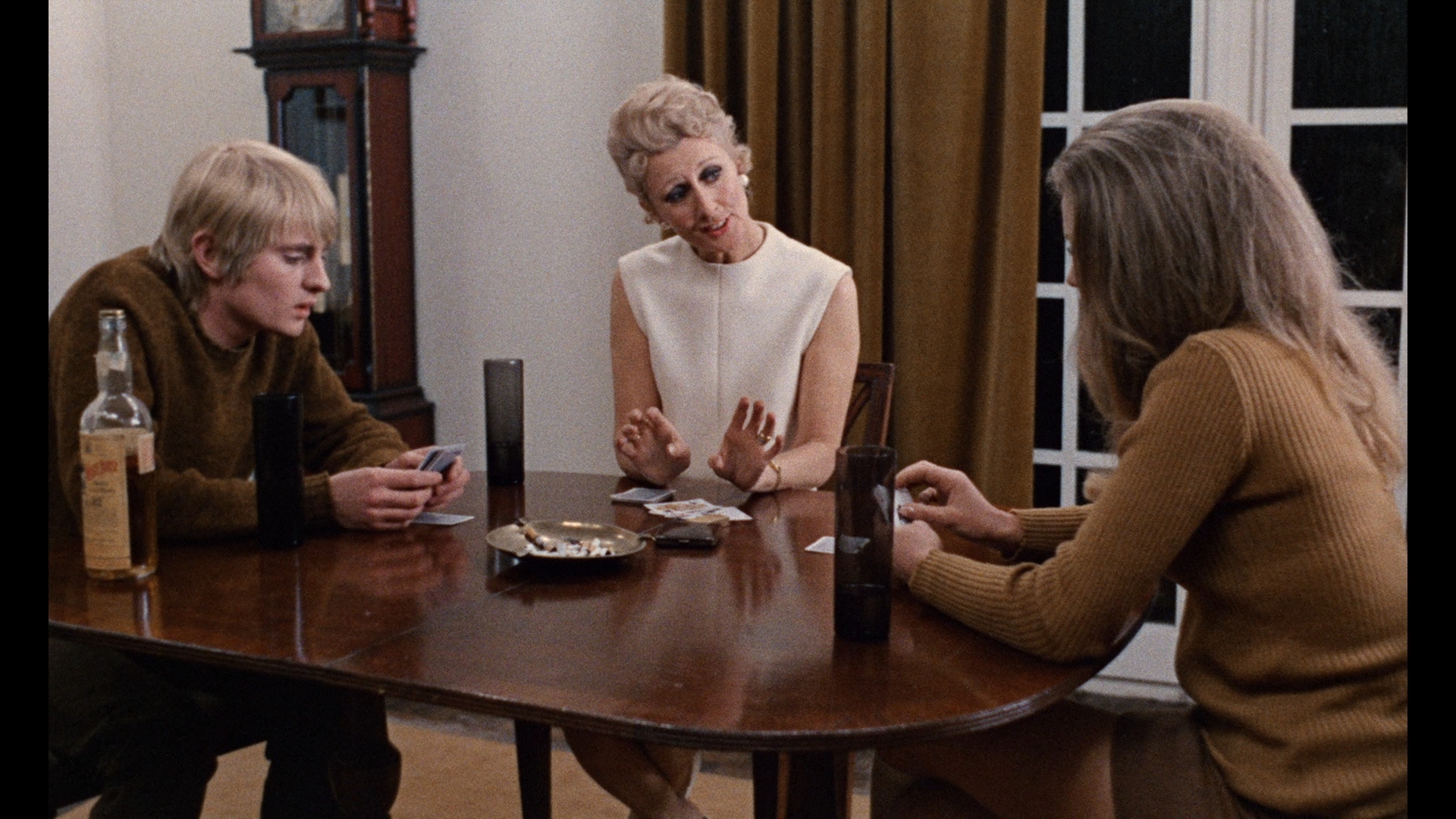 A British-Danish co-production with post-production work done in Italy, Whirlpool already has that bleak, dreamy Larraz atmosphere fully formed along with his ongoing fascination with people being murdered in cars. It's quite strong stuff for the time, when an X rating was usually just applied for more bare breasts than usual; it goes into some rough territory in the final stretch, with a kicker that still feels pretty transgressive today. The decision to shoot without sound and loop all the actors later (though they were clearly speaking English) caused this one to be dismissed as another European exploitation outing, though you'll recognize a voice or two from the usual dubbing crew of the time. Exactly why this film became so infernally difficult to see is a mystery given how widely it played, with the U.S. release (the only version that still exists on film) making some minor tweaks like cutting a few shots of people walking or driving around. Interesting, the U.S. edition also improves the film by ditching a voiceover imposed on the end of the European cut to give it a contrived "justice prevails" coda for the censors.
A British-Danish co-production with post-production work done in Italy, Whirlpool already has that bleak, dreamy Larraz atmosphere fully formed along with his ongoing fascination with people being murdered in cars. It's quite strong stuff for the time, when an X rating was usually just applied for more bare breasts than usual; it goes into some rough territory in the final stretch, with a kicker that still feels pretty transgressive today. The decision to shoot without sound and loop all the actors later (though they were clearly speaking English) caused this one to be dismissed as another European exploitation outing, though you'll recognize a voice or two from the usual dubbing crew of the time. Exactly why this film became so infernally difficult to see is a mystery given how widely it played, with the U.S. release (the only version that still exists on film) making some minor tweaks like cutting a few shots of people walking or driving around. Interesting, the U.S. edition also improves the film by ditching a voiceover imposed on the end of the European cut to give it a contrived "justice prevails" coda for the censors.
That American cut is the one found on the Arrow Blu-ray, a welcome resurrection of a film that has been spoken of rather than seen for far too long. (Strangely, Cipriani's score has been far easier to hear for many years.) Obviously there's no real precedent to compare it to here, but the film looks great here and should have any Larraz fans completely overjoyed at the level of detail in the landscape shots and the pitch-perfect color 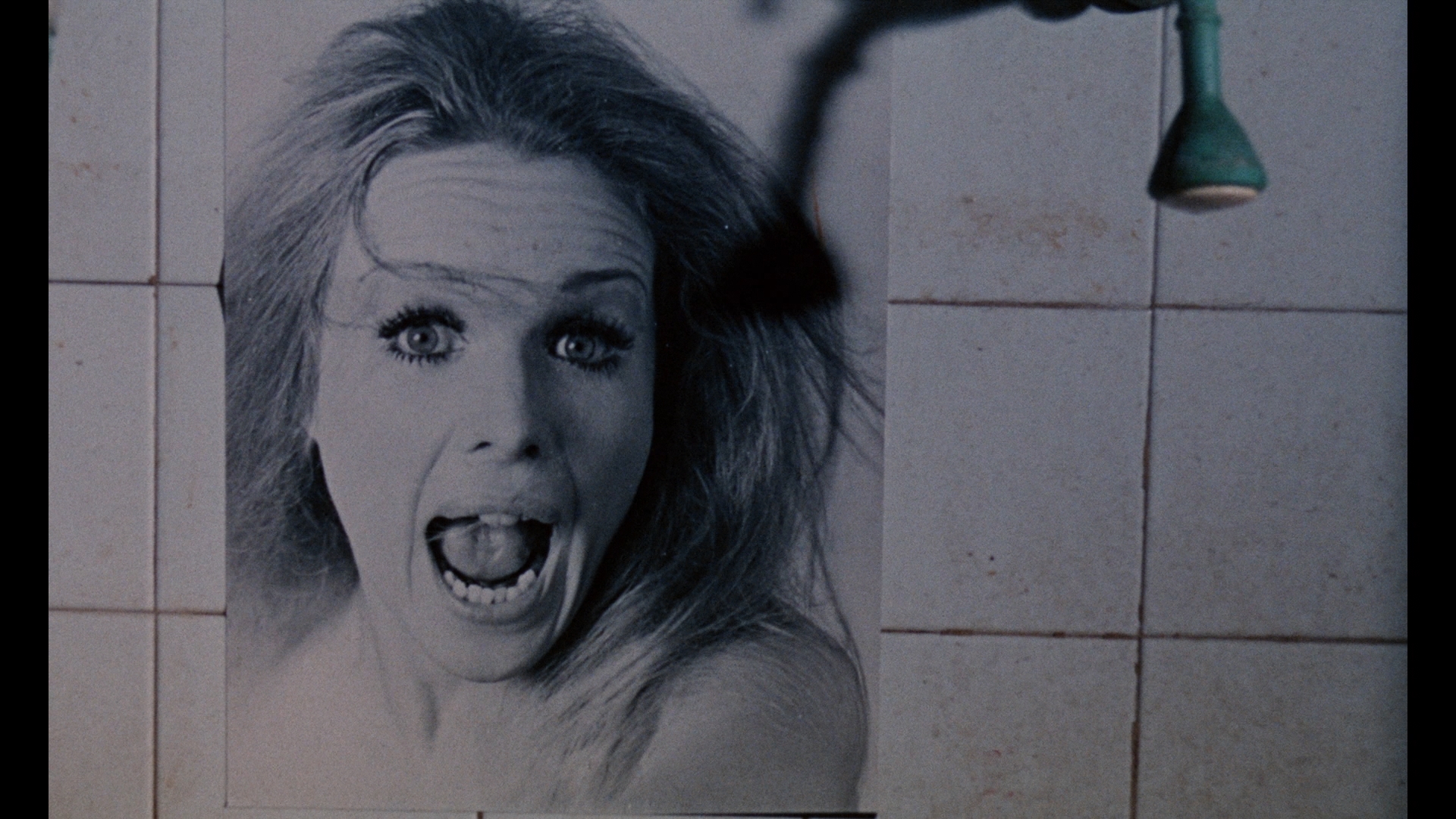 saturation. It's a real treat and a major miracle to see the film in this kind of prime condition, and the LPCM English mono track (with optional subtitles) is also in prime condition.
saturation. It's a real treat and a major miracle to see the film in this kind of prime condition, and the LPCM English mono track (with optional subtitles) is also in prime condition.
A new audio commentary by Tim Lucas mixes the factual and the insightful as he chats about being too young to see this during its theatrical, tying together the images of autumn decay with Larraz's recurring depiction of older sexuality, parsing out the odd international elements, figuring out some largely unjustified murders in the script, and pulling together connections to other European films like Peeping Tom and Blow-up. Bonus points 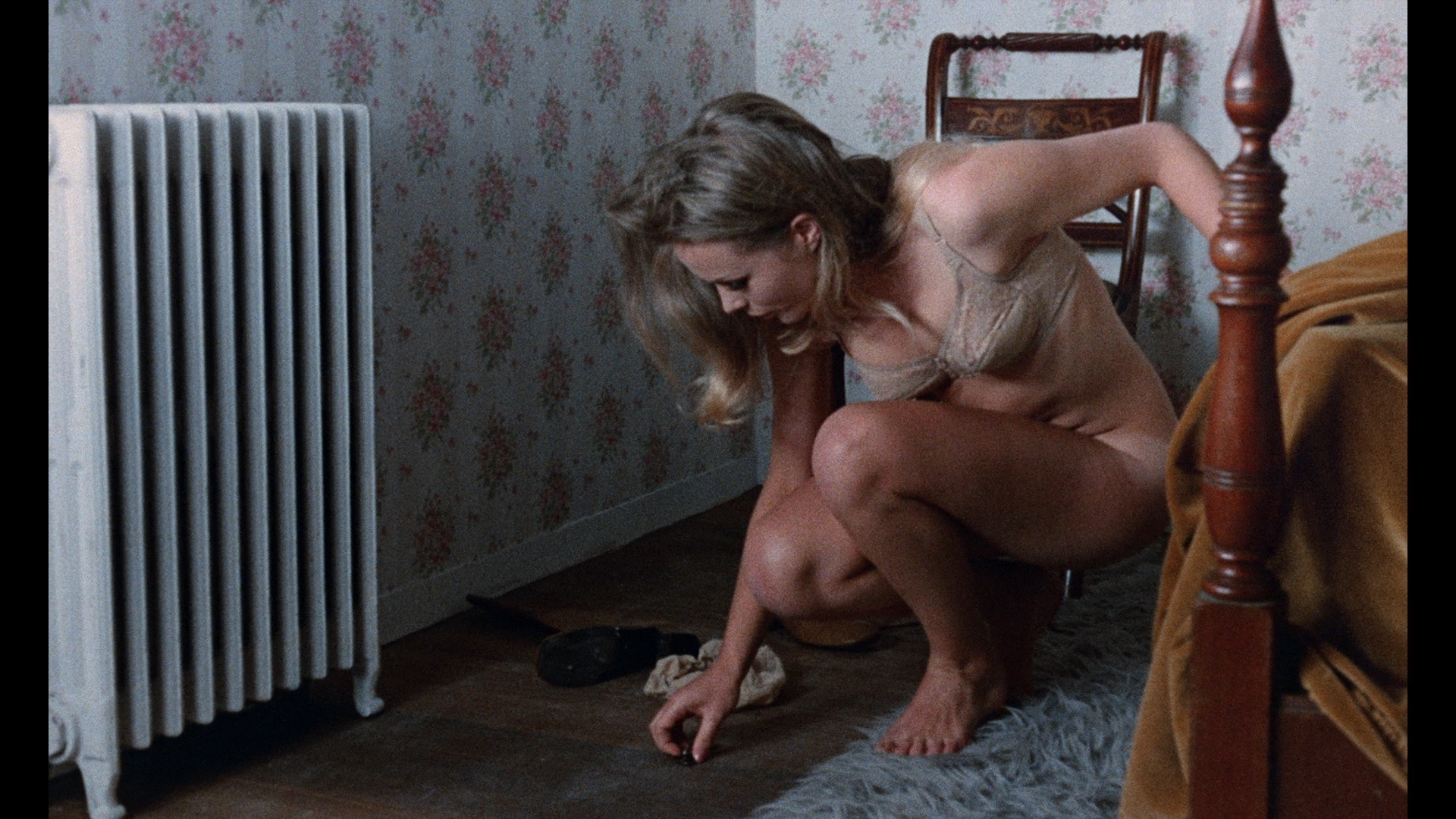 for the hilarious recreation of distributor Hallmark's most notorious ad campaign gimmick, too. The featurette "Obsessive Recurrence: The Early Films of José Larraz" (24m1s) features Kim Newman exploring the Larraz British cycle including the omnipresence of Lanchbury, and the grim, twist-free nature of most of his narratives. "A Curious Casting" (9m10s) finds actor Larry Dann recalling his "hour or two" spent on the film, which was shot under the title She Died with Her Boots On (later morphed into the U.S. tagline) and seemed like an average sexploitation offering at the time. Stick around for the creepy "bump" story, too. The fascinating "Deviations of Whirlpool" (27m12s) offers a side-by-side study of the differences between the U.S. version and the bootleg "European" cut, illustrating exactly what was changed along the way to tighten up the pace. You can also see Neves a couple of years after making this film in an excerpt from the BBC Parkinson show (13m19s) in 1972 as she talks about being a model and becoming nationally famous for her revealing ad appearances. It's also great to hear her natural voice, which is a lot more charming than the one heard in the feature itself. An archival Larraz interview (3m48s) shot by the Mondo Macabro gang in the mid-'90s is a quick discussion of the film and its budget, and the disc rounds out with a wild U.S. theatrical trailer and an
for the hilarious recreation of distributor Hallmark's most notorious ad campaign gimmick, too. The featurette "Obsessive Recurrence: The Early Films of José Larraz" (24m1s) features Kim Newman exploring the Larraz British cycle including the omnipresence of Lanchbury, and the grim, twist-free nature of most of his narratives. "A Curious Casting" (9m10s) finds actor Larry Dann recalling his "hour or two" spent on the film, which was shot under the title She Died with Her Boots On (later morphed into the U.S. tagline) and seemed like an average sexploitation offering at the time. Stick around for the creepy "bump" story, too. The fascinating "Deviations of Whirlpool" (27m12s) offers a side-by-side study of the differences between the U.S. version and the bootleg "European" cut, illustrating exactly what was changed along the way to tighten up the pace. You can also see Neves a couple of years after making this film in an excerpt from the BBC Parkinson show (13m19s) in 1972 as she talks about being a model and becoming nationally famous for her revealing ad appearances. It's also great to hear her natural voice, which is a lot more charming than the one heard in the feature itself. An archival Larraz interview (3m48s) shot by the Mondo Macabro gang in the mid-'90s is a quick discussion of the film and its budget, and the disc rounds out with a wild U.S. theatrical trailer and an  image gallery of nudity-packed lobby cards and international poster art.
image gallery of nudity-packed lobby cards and international poster art.
 An obvious response to the adolescent, peek-a-boo lesbian antics recently going on over at Hammer Films with the likes of The Vampire Lovers and Twins of Evil, Larraz's rip-roaring masterpiece Vampyres is almost singlehandedly responsible for his elevation in the '90s to the status of major Euro horror auteur. Two naked, beautiful lesbian lovers locked in a torrid embrace are shot to death by an unseen assailant in a dark, Gothic old mansion. Sounds like the perfect scene to open a solid exploitation film, right? Well, as anyone who's already seen the seminal European art/trash classic Vampyres can attest, that doesn't even begin to prepare you for what in store for the rest of this outrageous, insanely bloody, and relentlessly sexy classic that's lost none of its power to seduce and shock newcomers. You see, those two women from the opening, Fran (Morris) and Miriam (Anulka), are still inhabiting that same house, except they now have an insatiable bloodlust they satisfy by luring visitors home, bleeding them dry, and dumping their bodies nearby in staged auto accidents. Enter Ted (Brown), a traveling businessman who picks up a hitchhiking Fran and takes her home for a night of carnal knowledge that leaves him with a suspicious, very disturbing gash in his arm the next morning. Everyone keeps making
An obvious response to the adolescent, peek-a-boo lesbian antics recently going on over at Hammer Films with the likes of The Vampire Lovers and Twins of Evil, Larraz's rip-roaring masterpiece Vampyres is almost singlehandedly responsible for his elevation in the '90s to the status of major Euro horror auteur. Two naked, beautiful lesbian lovers locked in a torrid embrace are shot to death by an unseen assailant in a dark, Gothic old mansion. Sounds like the perfect scene to open a solid exploitation film, right? Well, as anyone who's already seen the seminal European art/trash classic Vampyres can attest, that doesn't even begin to prepare you for what in store for the rest of this outrageous, insanely bloody, and relentlessly sexy classic that's lost none of its power to seduce and shock newcomers. You see, those two women from the opening, Fran (Morris) and Miriam (Anulka), are still inhabiting that same house, except they now have an insatiable bloodlust they satisfy by luring visitors home, bleeding them dry, and dumping their bodies nearby in staged auto accidents. Enter Ted (Brown), a traveling businessman who picks up a hitchhiking Fran and takes her home for a night of carnal knowledge that leaves him with a suspicious, very disturbing gash in his arm the next morning. Everyone keeps making 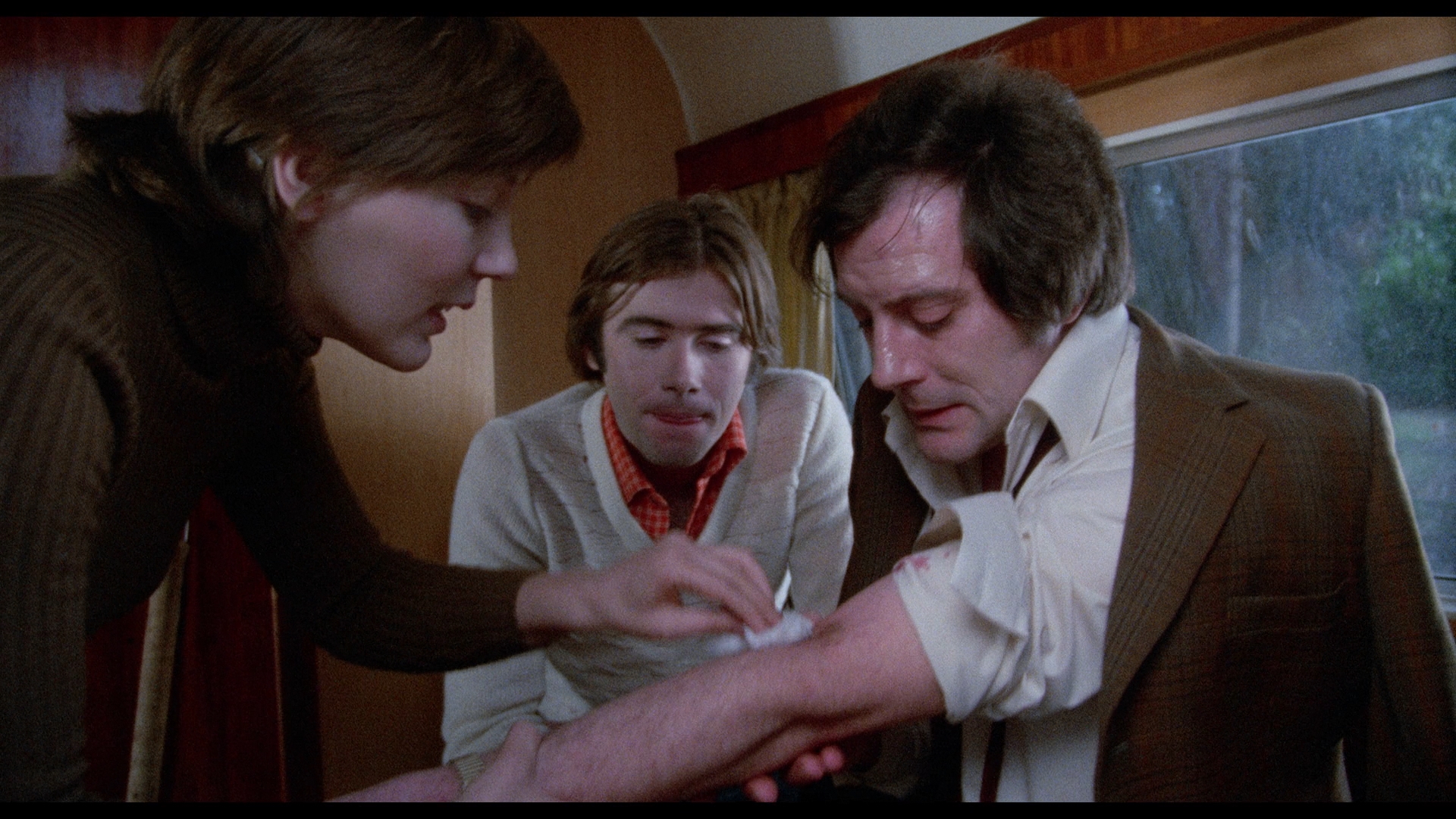 references to Ted being awfully familiar, too, which indicates there might be some reason the gals have decided to keep him around and keep draining him out far more slowly than usual. Then there's the nearby camping couple (Deacon and Faulkner) who keep an eye out on the strange ladies and their latest prey while slowly getting drawn into the bloody web themselves.
references to Ted being awfully familiar, too, which indicates there might be some reason the gals have decided to keep him around and keep draining him out far more slowly than usual. Then there's the nearby camping couple (Deacon and Faulkner) who keep an eye out on the strange ladies and their latest prey while slowly getting drawn into the bloody web themselves.
 As with fellow filmmaker Jorge Grau (The Living Dead at Manchester Morgue), the English countryside apparently brought out the best in Larraz as this film pulls out all the stops from start to finish, perfectly pacing its vicious attack scenes and erotic interludes with disquieting passages of meditative silence. The elliptical, time-tripping elements in the story never really add up to anything substantial (so much so that most of the final scene was cut from many VHS versions without anyone particularly noticing), but the searing presences of Morris and Anulka alone make this perhaps the definitive lesbian vampire film, a hot and heavy gorefest with enough artistry and lyricism to please anyone looking for skin, scares, or even high art.
As with fellow filmmaker Jorge Grau (The Living Dead at Manchester Morgue), the English countryside apparently brought out the best in Larraz as this film pulls out all the stops from start to finish, perfectly pacing its vicious attack scenes and erotic interludes with disquieting passages of meditative silence. The elliptical, time-tripping elements in the story never really add up to anything substantial (so much so that most of the final scene was cut from many VHS versions without anyone particularly noticing), but the searing presences of Morris and Anulka alone make this perhaps the definitive lesbian vampire film, a hot and heavy gorefest with enough artistry and lyricism to please anyone looking for skin, scares, or even high art.
The theatrical and video history of Vampyres is ridiculously complex, but that didn't stop it from becoming a popular cult title in nearly every country in which it opened. Every U.K. version since the original release lost varying amounts of nudity and gore adding up to around three minutes until Anchor Bay eventually passed it uncut on DVD, and in America, VHS consumers got a version from Magnum Video featuring a different electronic score over the opening and closing titles while ditching the aforementioned footage during the last scene. (Amazingly, the cover box also tried to tie in with a then-current theatrical hit by proclaiming, "They're Lost Girls!") As for American DVD, the first version from Anchor Bay restored the music and final scene but inexplicably lost half a minute of gore from the climactic attack on the camping 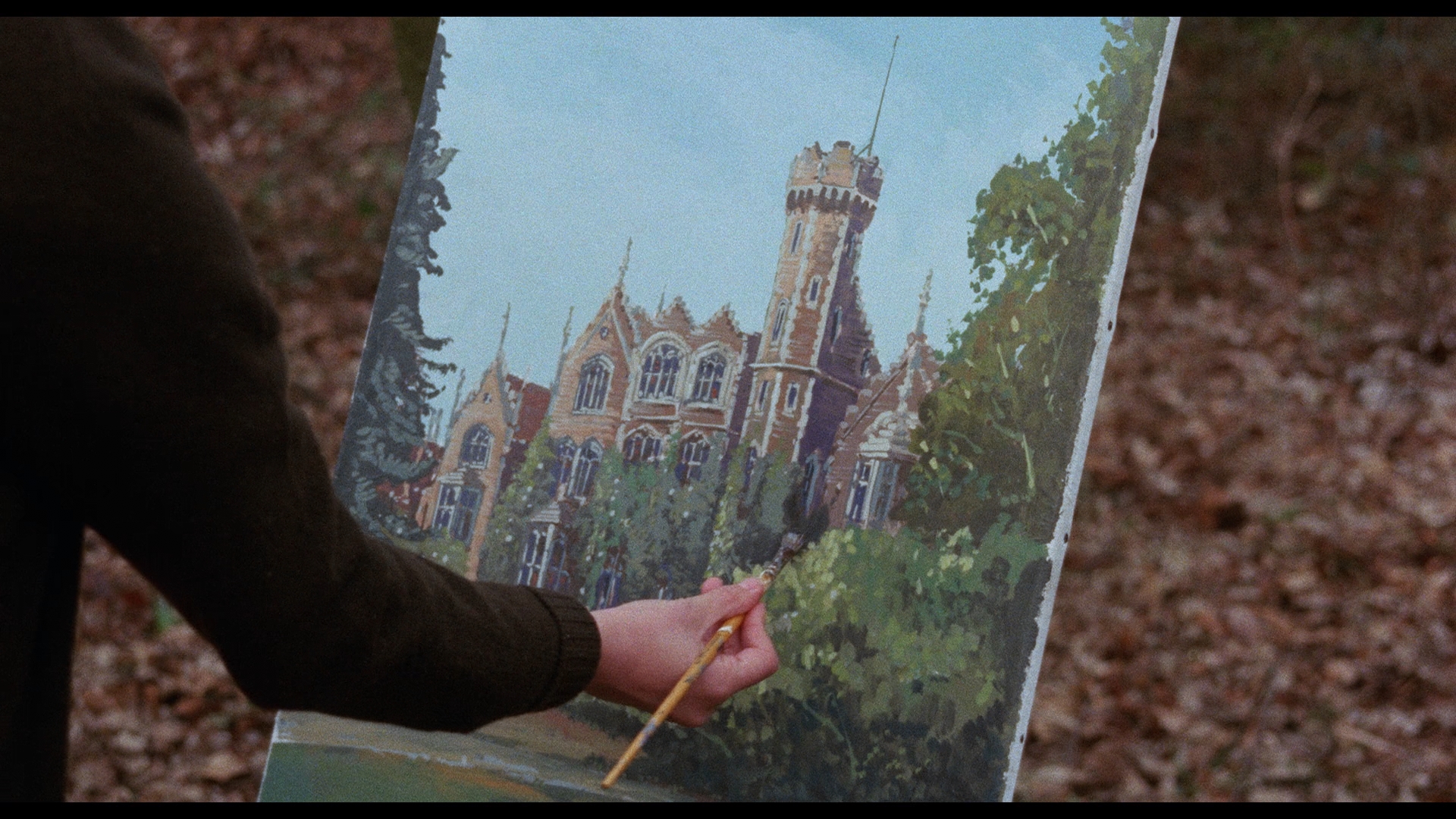 couple, proof of yet another filmic variant lying around in the vaults. The reissue from Blue Underground reinstated the missing footage and thus became the first complete, English-friendly version available to the mass public.
The Blu-ray released six and a half years later tops it easily in the technical
couple, proof of yet another filmic variant lying around in the vaults. The reissue from Blue Underground reinstated the missing footage and thus became the first complete, English-friendly version available to the mass public.
The Blu-ray released six and a half years later tops it easily in the technical 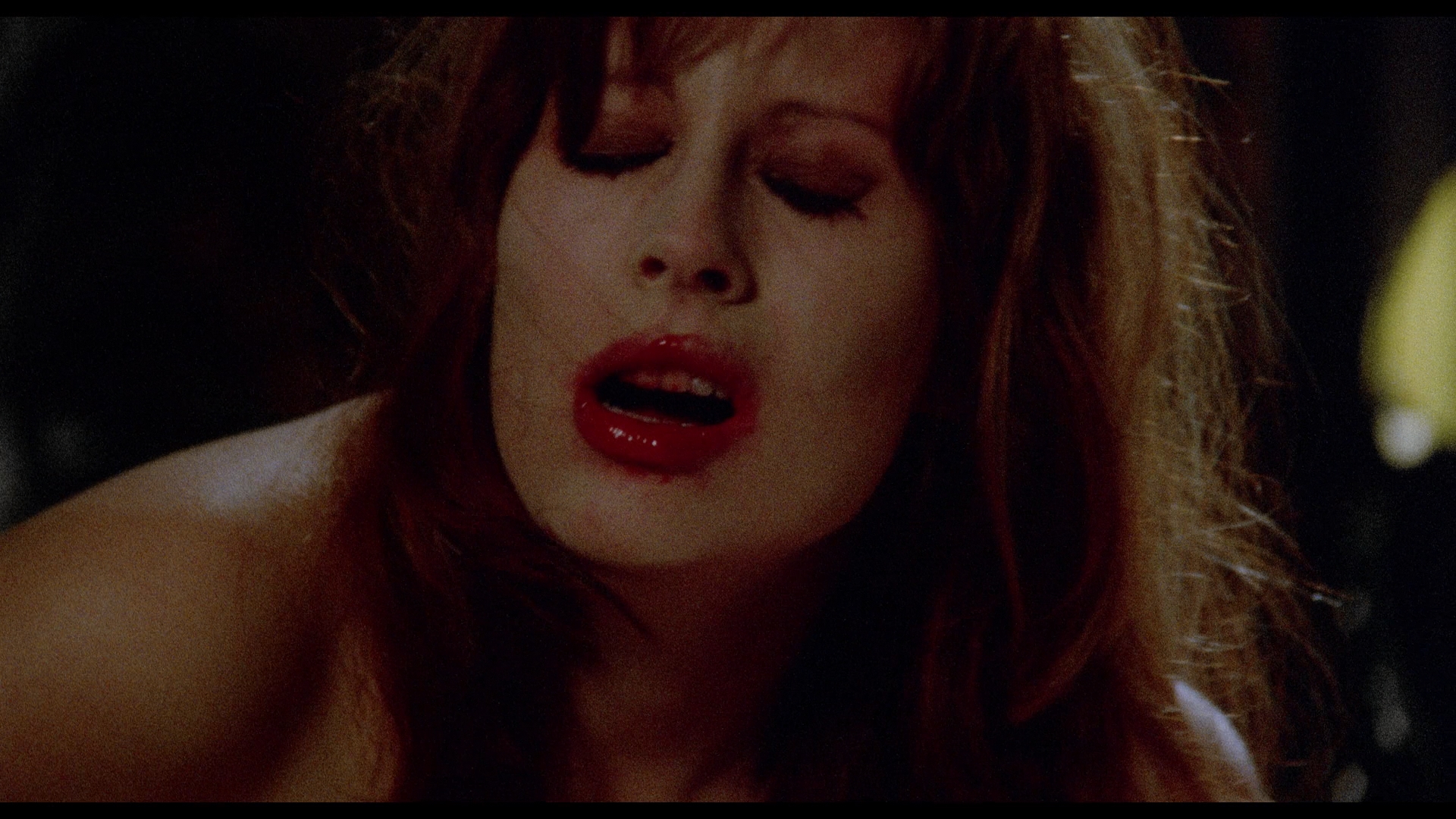 department while carrying over most of the same excellent supplemental features. The lovely, very '70s veneer of grain in the darker scenes is still here, thankfully, with a great deal more detail visible in the delicate daylight landscape shots. The minor digital sharpening from the DVD is also nowhere to be found. The soundtrack options include a DTS-HD 7.1 mix and a Dolby Digital 5.1 mix which only sparingly spread out James Clarke's fuzz-guitar-laden score out to the outer speakers, while the original Dolby Digital mono mix is there to preserve the original, more authentic mix. Don't expect a major difference between any of the three options as the dialogue and sound effects are hardly state of the art. Larraz and Brian Smedley-Aston provide a hilarious, now-legendary commentary track that's bawdy, profane, and wildly unpredictable; while Larraz's career afterwards had its share of bight spots as well (namely Black Candles and The Coming of Sin), he's quite aware of his place in Euro horror history and rattles off some great anecdotes about being a foreign director toiling away in the UK. "The Return of the Vampyres" (13m39s) features Morris and Anulka (both of whom still look fab despite their far more demure outfit choices) talking about their lives before, during, and after the project. Fans will definitely love hearing the stories that brought them to their most memorable roles even if they don't seem to know much about the film itself. Finally you get the English international trailer (which packs in way more nudity than you'd ever see today) and the hilarious, overbaked American trailer ("Very Unnatural Ladies!") that justifiably became a staple of trailer comps for years. The DVD adds some text and still-based exclusive extras, so die-hards may want to hang on to that version to keep the stills gallery, a "lost caravan" scene overview via text and photos (not much of a loss, really, but a nice collectible), a bonus Anulka glamour gallery, and a pdf tribute with additional history and liner notes.
department while carrying over most of the same excellent supplemental features. The lovely, very '70s veneer of grain in the darker scenes is still here, thankfully, with a great deal more detail visible in the delicate daylight landscape shots. The minor digital sharpening from the DVD is also nowhere to be found. The soundtrack options include a DTS-HD 7.1 mix and a Dolby Digital 5.1 mix which only sparingly spread out James Clarke's fuzz-guitar-laden score out to the outer speakers, while the original Dolby Digital mono mix is there to preserve the original, more authentic mix. Don't expect a major difference between any of the three options as the dialogue and sound effects are hardly state of the art. Larraz and Brian Smedley-Aston provide a hilarious, now-legendary commentary track that's bawdy, profane, and wildly unpredictable; while Larraz's career afterwards had its share of bight spots as well (namely Black Candles and The Coming of Sin), he's quite aware of his place in Euro horror history and rattles off some great anecdotes about being a foreign director toiling away in the UK. "The Return of the Vampyres" (13m39s) features Morris and Anulka (both of whom still look fab despite their far more demure outfit choices) talking about their lives before, during, and after the project. Fans will definitely love hearing the stories that brought them to their most memorable roles even if they don't seem to know much about the film itself. Finally you get the English international trailer (which packs in way more nudity than you'd ever see today) and the hilarious, overbaked American trailer ("Very Unnatural Ladies!") that justifiably became a staple of trailer comps for years. The DVD adds some text and still-based exclusive extras, so die-hards may want to hang on to that version to keep the stills gallery, a "lost caravan" scene overview via text and photos (not much of a loss, really, but a nice collectible), a bonus Anulka glamour gallery, and a pdf tribute with additional history and liner notes.
The Arrow Video Blu-ray in the set is cited as a new 2K transfer like its companion features, and it manages to improve on the earlier disc with punchier colors and more fine, clearly defined film grain and textures in things like foliage and clothing. It isn't a radical overhaul but does feel more tactile and eerie, with some cooler color timing applied during the big 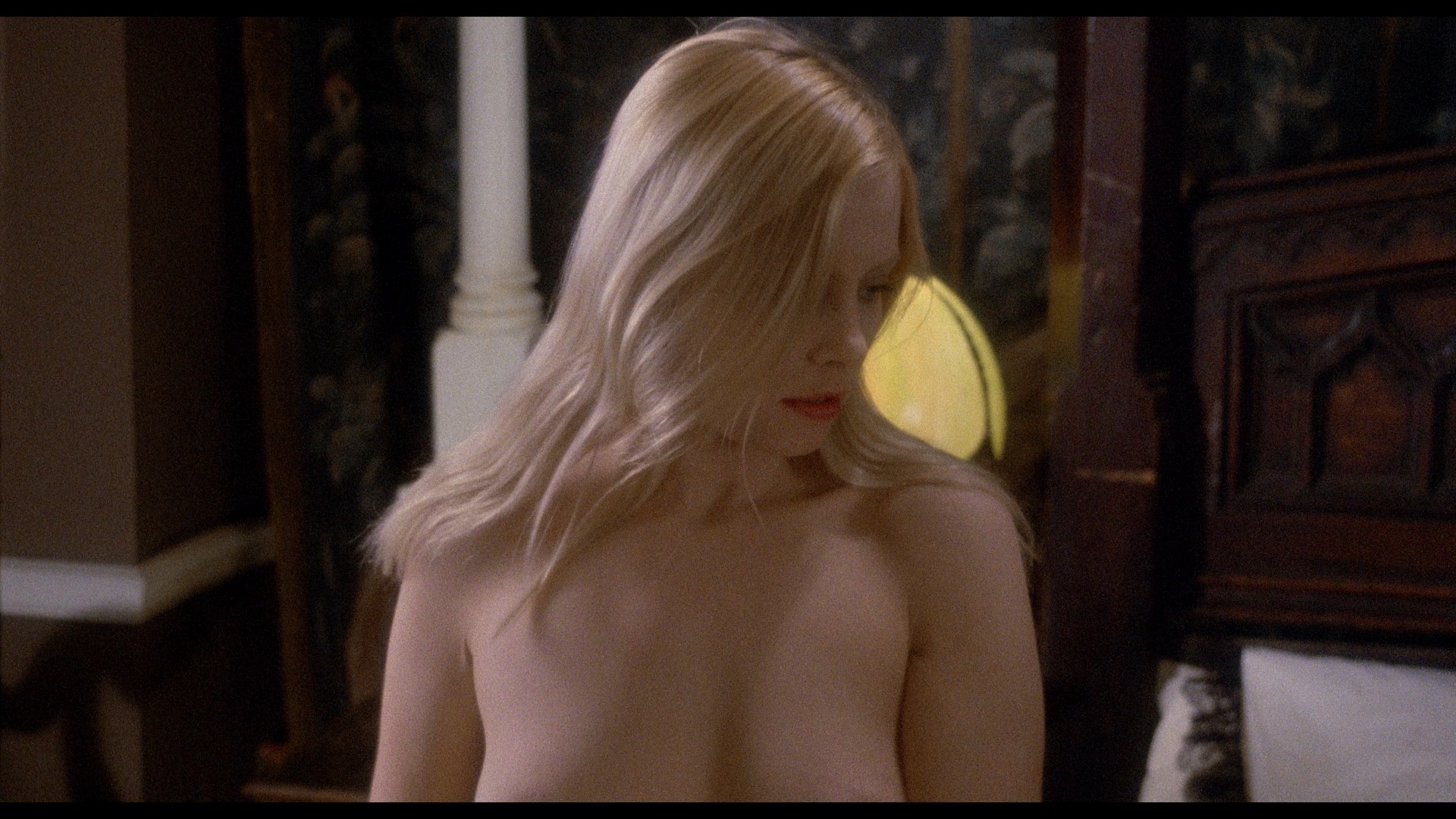 nocturnal climax. This time you get the standard English mono track (LPCM), with optional English subtitles; the film can
nocturnal climax. This time you get the standard English mono track (LPCM), with optional English subtitles; the film can  also be played with a new audio commentary by Kat Ellinger, who gets to strut her movie vampire stuff here as she talks about Larraz's horror and non-horror output, the ties to other European cinema vampires (especially Jean Rollin, Daughters of Darkness, and Hammer), the film's origins with Larraz and Smedley-Aston, the commercial demands of the horror market at the time, and the echoes of literary and real-life bloodsucker figures. This release easily blasts past its predecessors in terms of video extras, starting off with a section of cast and crew interviews with Smedley-Aston ("A High-Stakes Enterprise," 18m29s), Morris ("By This Sign, I'll Recognize You," 14m12s), Anulka ("Daughter of Dracula," 13m18s), Deacon ("A Cut-Throat Business," 18m30s), Faulkner ("Unhappy Camper," 12m4s), makeup artist and 2001: A Space Odyssey vet Colin Arthur ("Bloodletting on a Budget," 17m57s), and composer James Kenelm Clarke ("Requiem for a Vampyre," 3m49s). The first three are essentially updated iterations of the interviews they've done in the past and are cheerful as always about the production, while Deacon and Faulkner had a much rougher time on the production and felt a bit exploited by the addition of an unscripted sex scene and other communication breakdowns. "Reimagining Vampyres" (21m57s) with Larraz’s friend and collaborator Victor Matellano covers his on-and-off times with the filmmaker starting in the late '90s and the conditions that led to him remaking this film in 2015. He also mentions have a trio of unproduced Larraz scripts, which would be interesting to see produced someday. Another excerpt from the same Larraz interview session (14m20s) is more substantive here as he covers the production of the film from meeting Smedley-Aston onward, and he's also seen in a 1997 VHS-shot appearance (9m26s) with Morris at Eurofest, both quite affectionate and glad to be among fans. Definitely don't overlook the image gallery section, which is divided into stills (246 of them, most extremely NSFW), behind the scenes shots, promotional and miscellaneous material (including its reissue as Midnight Slaughter), and a brief look at that lost caravan sequence. The U.S. and European trailers are also included.
also be played with a new audio commentary by Kat Ellinger, who gets to strut her movie vampire stuff here as she talks about Larraz's horror and non-horror output, the ties to other European cinema vampires (especially Jean Rollin, Daughters of Darkness, and Hammer), the film's origins with Larraz and Smedley-Aston, the commercial demands of the horror market at the time, and the echoes of literary and real-life bloodsucker figures. This release easily blasts past its predecessors in terms of video extras, starting off with a section of cast and crew interviews with Smedley-Aston ("A High-Stakes Enterprise," 18m29s), Morris ("By This Sign, I'll Recognize You," 14m12s), Anulka ("Daughter of Dracula," 13m18s), Deacon ("A Cut-Throat Business," 18m30s), Faulkner ("Unhappy Camper," 12m4s), makeup artist and 2001: A Space Odyssey vet Colin Arthur ("Bloodletting on a Budget," 17m57s), and composer James Kenelm Clarke ("Requiem for a Vampyre," 3m49s). The first three are essentially updated iterations of the interviews they've done in the past and are cheerful as always about the production, while Deacon and Faulkner had a much rougher time on the production and felt a bit exploited by the addition of an unscripted sex scene and other communication breakdowns. "Reimagining Vampyres" (21m57s) with Larraz’s friend and collaborator Victor Matellano covers his on-and-off times with the filmmaker starting in the late '90s and the conditions that led to him remaking this film in 2015. He also mentions have a trio of unproduced Larraz scripts, which would be interesting to see produced someday. Another excerpt from the same Larraz interview session (14m20s) is more substantive here as he covers the production of the film from meeting Smedley-Aston onward, and he's also seen in a 1997 VHS-shot appearance (9m26s) with Morris at Eurofest, both quite affectionate and glad to be among fans. Definitely don't overlook the image gallery section, which is divided into stills (246 of them, most extremely NSFW), behind the scenes shots, promotional and miscellaneous material (including its reissue as Midnight Slaughter), and a brief look at that lost caravan sequence. The U.S. and European trailers are also included. 
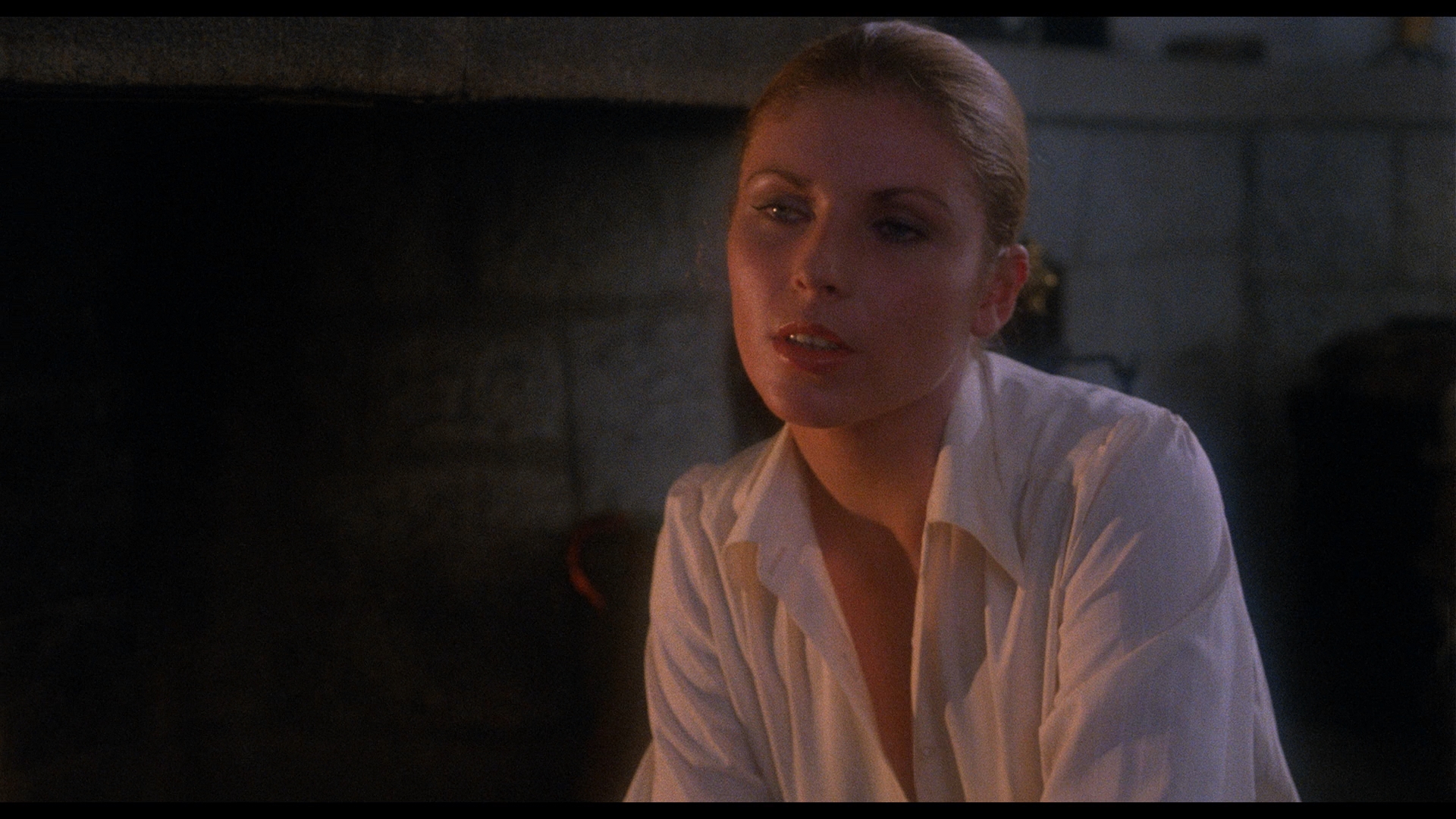 Finally the twisted The Coming of Sin is another key Larraz title first ushered to prominence in the landmark book Immoral Tales. A low-budget blend of exploitation and art, it gained notoriety under its more uncomfortable theatrical release title, Violation of the Bitch, though for its first DVD release, U.K. label Pagan translated the original Spanish title, La visita del vicio (or more literally, Vice Makes a Visit), as The Coming of Sin. Under any time, it's a haunting, often mystifying daydream filled with erotica and surrealism. Beautiful amateur painter Lorna (Granada) passes her sunny days dabbling with a paintbrush and burying herself in the family library. Life changes dramatically with the arrival of Triana (Zuaso), a dark-haired girl from a gypsy clan who comes to stay indefinitely and sparks a gradual, torrid relationship with Lorna. However, Triana's dreams are haunted by images of a naked man (Machado) on horseback, a premonition which comes true one day while she strolls through the woods surrounding a nearby lake. The mysterious man, who never seems to wear much, attempts to rape Triana, who runs home and tells Lorna about the weird nudist living with his horse out in the wild near their house. Lorna goes to investigate while Triana's fantasies continue, including one which finds her naked inside a giant horse about to be... uh, straddled, apparently. Soon the mystery man directly intrudes on their lives, beginning an unholy triangle of lust that culminates in a dark reversal of fortune.
Finally the twisted The Coming of Sin is another key Larraz title first ushered to prominence in the landmark book Immoral Tales. A low-budget blend of exploitation and art, it gained notoriety under its more uncomfortable theatrical release title, Violation of the Bitch, though for its first DVD release, U.K. label Pagan translated the original Spanish title, La visita del vicio (or more literally, Vice Makes a Visit), as The Coming of Sin. Under any time, it's a haunting, often mystifying daydream filled with erotica and surrealism. Beautiful amateur painter Lorna (Granada) passes her sunny days dabbling with a paintbrush and burying herself in the family library. Life changes dramatically with the arrival of Triana (Zuaso), a dark-haired girl from a gypsy clan who comes to stay indefinitely and sparks a gradual, torrid relationship with Lorna. However, Triana's dreams are haunted by images of a naked man (Machado) on horseback, a premonition which comes true one day while she strolls through the woods surrounding a nearby lake. The mysterious man, who never seems to wear much, attempts to rape Triana, who runs home and tells Lorna about the weird nudist living with his horse out in the wild near their house. Lorna goes to investigate while Triana's fantasies continue, including one which finds her naked inside a giant horse about to be... uh, straddled, apparently. Soon the mystery man directly intrudes on their lives, beginning an unholy triangle of lust that culminates in a dark reversal of fortune.
Though 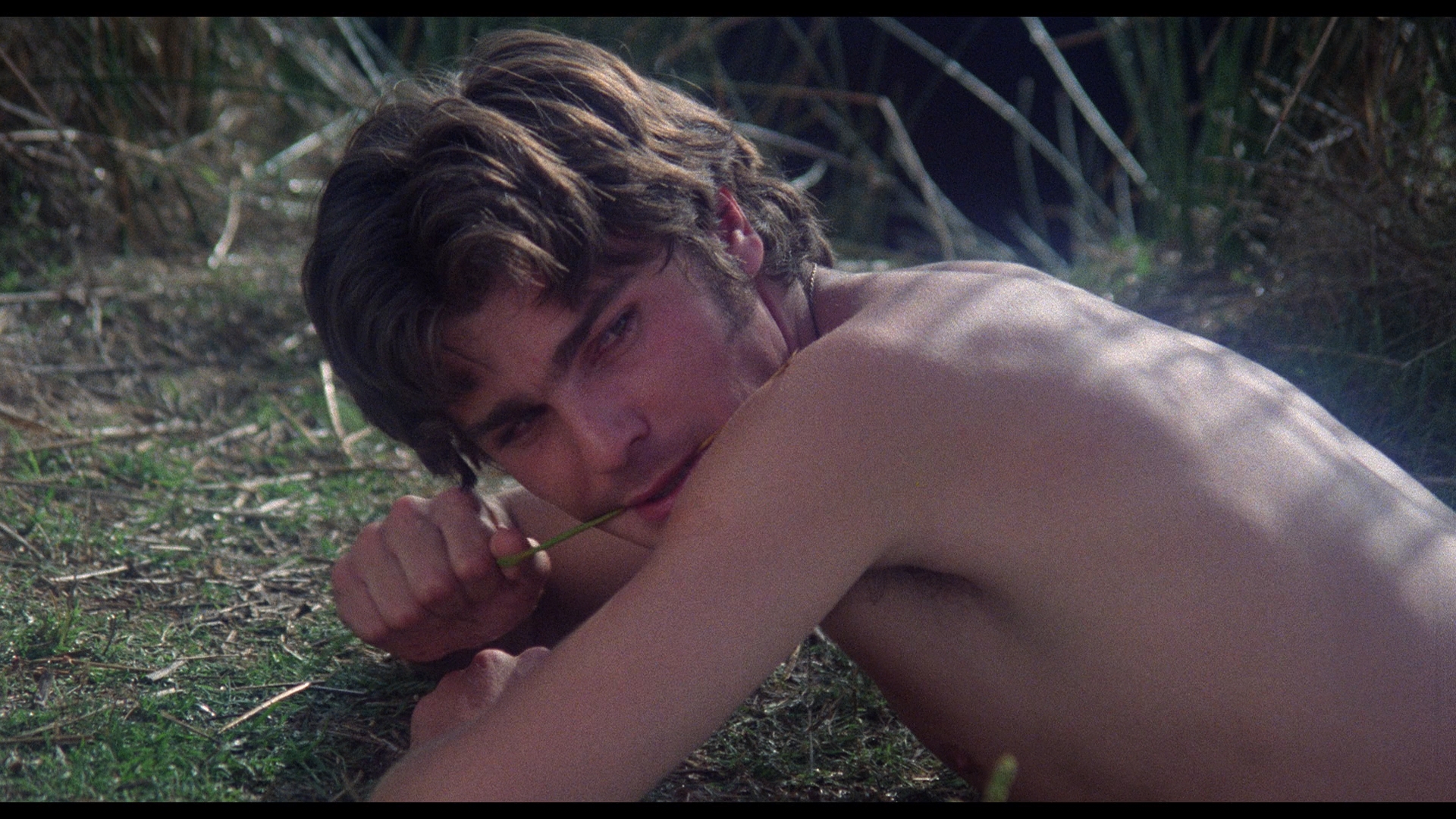 undeniably rough around the edges, The Coming of Sin is a strangely compelling alternative to the usual plotless European sex films of the period. The non-actors were evidently hired more for their looks than their thespian skills, and they make for adequate pawns in Larraz's little mind game.
undeniably rough around the edges, The Coming of Sin is a strangely compelling alternative to the usual plotless European sex films of the period. The non-actors were evidently hired more for their looks than their thespian skills, and they make for adequate pawns in Larraz's little mind game. 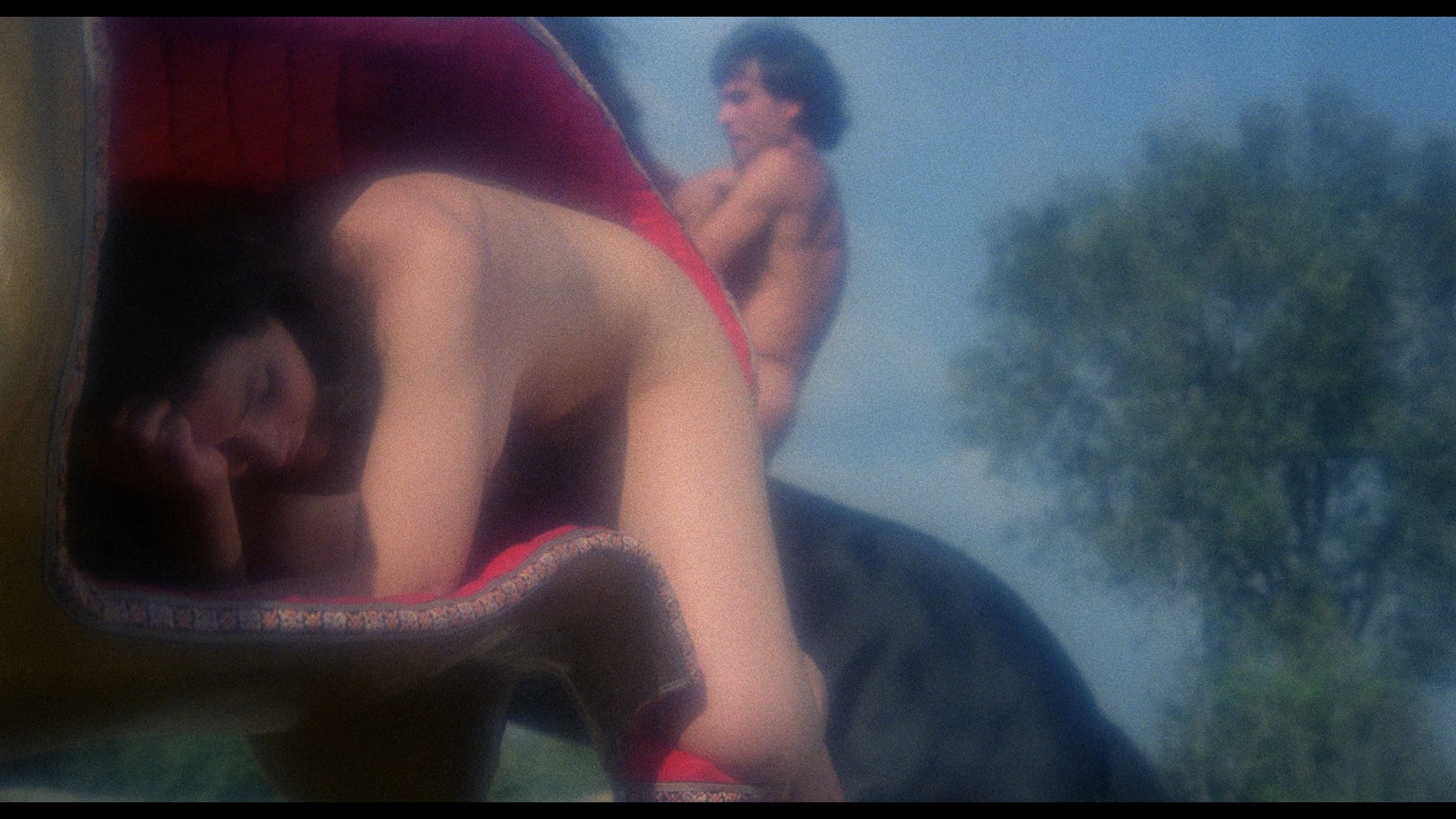 As with his other kinky countryside yarns like Vampyres and Symptoms, Larraz relies on soft focus photography and elegant camera movements to counterpoint the often extreme and bizarre activity onscreen, including some fairly graphic and fleshy sex scenes. (An even stronger variant with hardcore inserts made the rounds and has turned up on the bootleg video circuit as well as an Italian PAL VHS release as Sodomia, but this unofficial bastardization of Larraz's film is best avoided.) The international version under the Violation title, originally released in Holland and other European countries before hitting the video dupe market, was dramatically shorter than Larraz's preferred cut, clocking in just at 70 minutes. This cut eliminates several crucial scenes in their entirety and alters the opening credits to play out over a later scene. The Pagan DVD represented a closer approximation of Larraz's original intentions, though the BBFC demanded a deletion of 1 minute and 15 seconds to obtain an "18" certificate, a punishment given to Triana's rape scene which is still quite explicit but contains a strange jump in the audio, abruptly cutting off the music. Image quality is quite good on that release considering the softness of the source and the transfer limitations of the time; the gauzy appearance reveals some compression problems, but the clarity of the image and nicely defined pastel color schemes make up for it. The letterboxing also adds some much needed breathing room to Larraz's claustrophobic close ups, which come off as oppressive and clumsy on earlier cropped video editions. The DVD also includes a photo gallery and a thirty minute interview with Larraz, apparently the complete unedited version of his discussion excerpted in his episode of the worthy Channel 4 series, Eurotika! Candid and often quite funny, he discusses his career at great length, and the disc offers chapter indexes to each film and subject.
As with his other kinky countryside yarns like Vampyres and Symptoms, Larraz relies on soft focus photography and elegant camera movements to counterpoint the often extreme and bizarre activity onscreen, including some fairly graphic and fleshy sex scenes. (An even stronger variant with hardcore inserts made the rounds and has turned up on the bootleg video circuit as well as an Italian PAL VHS release as Sodomia, but this unofficial bastardization of Larraz's film is best avoided.) The international version under the Violation title, originally released in Holland and other European countries before hitting the video dupe market, was dramatically shorter than Larraz's preferred cut, clocking in just at 70 minutes. This cut eliminates several crucial scenes in their entirety and alters the opening credits to play out over a later scene. The Pagan DVD represented a closer approximation of Larraz's original intentions, though the BBFC demanded a deletion of 1 minute and 15 seconds to obtain an "18" certificate, a punishment given to Triana's rape scene which is still quite explicit but contains a strange jump in the audio, abruptly cutting off the music. Image quality is quite good on that release considering the softness of the source and the transfer limitations of the time; the gauzy appearance reveals some compression problems, but the clarity of the image and nicely defined pastel color schemes make up for it. The letterboxing also adds some much needed breathing room to Larraz's claustrophobic close ups, which come off as oppressive and clumsy on earlier cropped video editions. The DVD also includes a photo gallery and a thirty minute interview with Larraz, apparently the complete unedited version of his discussion excerpted in his episode of the worthy Channel 4 series, Eurotika! Candid and often quite funny, he discusses his career at great length, and the disc offers chapter indexes to each film and subject. 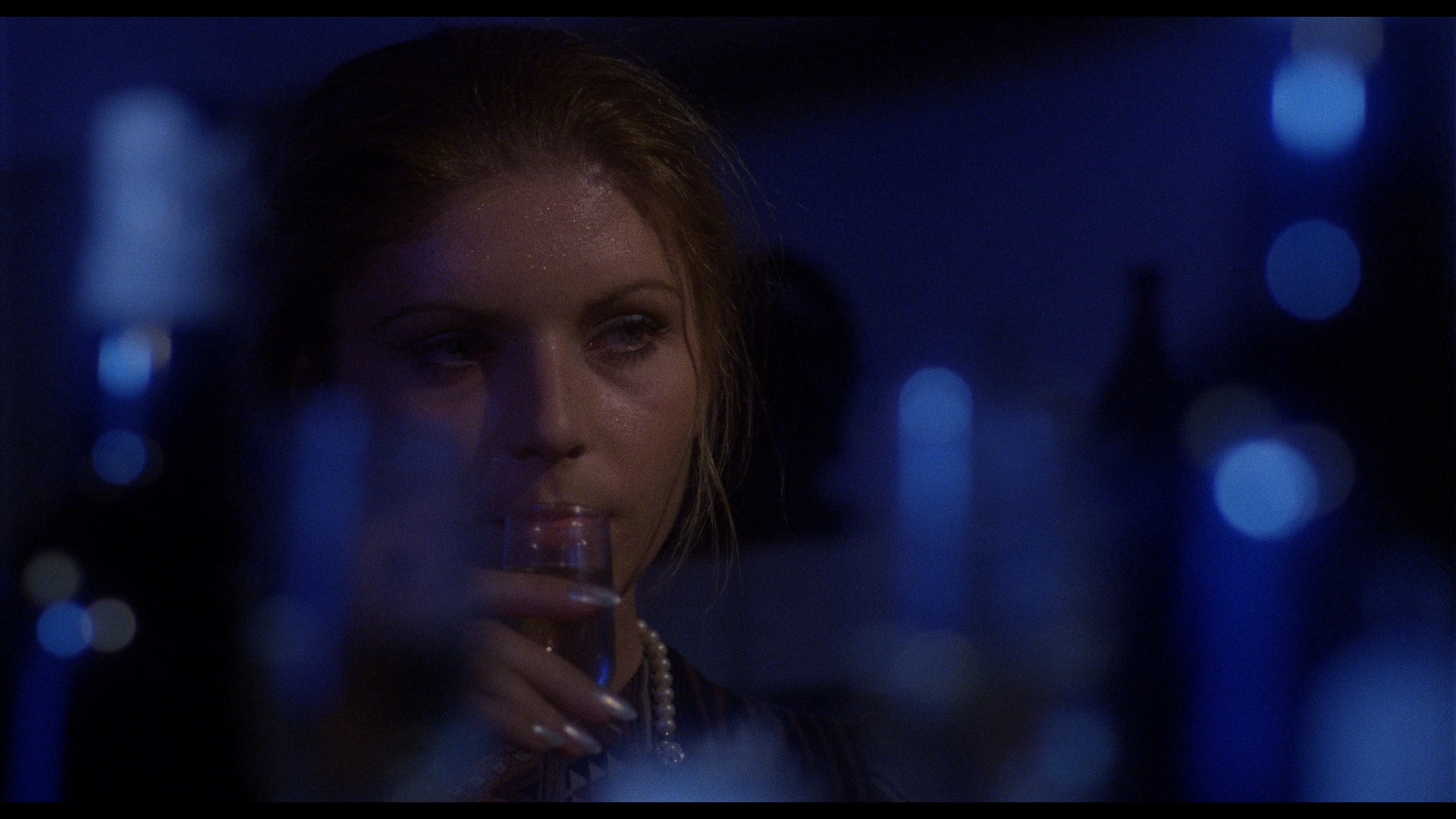
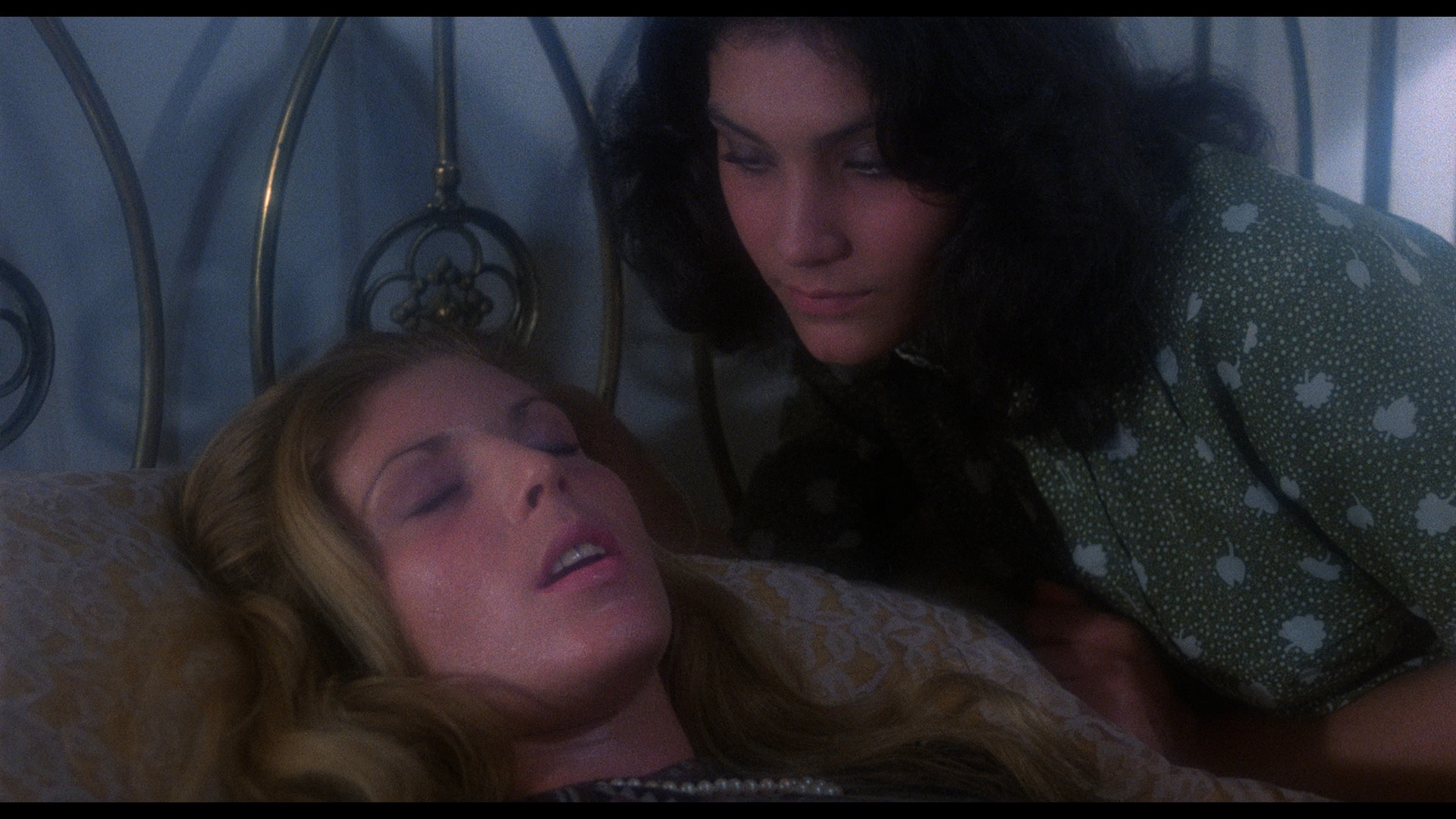 The 2019 Arrow Blu-ray manages to finally get things right with Larraz's unexpurgated original cut intact for the first time, including the uncensored rape scene. The film is still gauzy and grainy, but it looks really fantastic here if you're familiar with its history and have dabbled in the previous Blu-rays of, say, Walerian Borowczyk, who adopts a similar aesthetic. LPCM mono options are presented in either Spanish or Italian (with relevant English subtitles for each); the Spanish track is much classier and more appropriate, while the English dub is, well, pretty goofy with some perplexing British accents imposed on the actors for no clear reason. Ellinger and her Daughters of Darkness podcast companion, Samm Deighan, team up for a lively commentary covering the state of post-Franco Spanish cinema, Larraz's sometimes brusque method of dealing with amateur actors, an interesting similarity to Frida, and the director's approach to sexuality that makes his films as essential as some of his better known contemporaries. Morris provides another essential look at alternate versions with "Variations of Vice" (6m10s), a breakdown of the various video editions over the years including some superimpositions and a daunting peak at a Final Cut project to show how extensively each one differs (and usually looks terrible). "Memories of Larraz" (35m3s) is another video remembrance, this time with filmmaker Simon Birrell explaining how they developed a close rapport when he moved to Spain and had a very colorful experience in a high traffic movie theater that initially put him off Larraz for a while. Also included is Berrill's 2005 short film, His Last Request (28m23s), which has previously been available as a standalone DVD and was made with Larraz's supervision. A quirky little silent film starring Euro-cult legend Jack Taylor, it's nice to see here in better quality than ever before. Finally you get another segment from the '90s Larraz interview session (4m55s), a gallery of stills and promotional art, and the very dramatic Spanish trailer with English subtitles. The package also comes with new artwork by Gilles Vranckz and an 80-page book featuring new essays by Tim Greaves and Vanity Celis.
The 2019 Arrow Blu-ray manages to finally get things right with Larraz's unexpurgated original cut intact for the first time, including the uncensored rape scene. The film is still gauzy and grainy, but it looks really fantastic here if you're familiar with its history and have dabbled in the previous Blu-rays of, say, Walerian Borowczyk, who adopts a similar aesthetic. LPCM mono options are presented in either Spanish or Italian (with relevant English subtitles for each); the Spanish track is much classier and more appropriate, while the English dub is, well, pretty goofy with some perplexing British accents imposed on the actors for no clear reason. Ellinger and her Daughters of Darkness podcast companion, Samm Deighan, team up for a lively commentary covering the state of post-Franco Spanish cinema, Larraz's sometimes brusque method of dealing with amateur actors, an interesting similarity to Frida, and the director's approach to sexuality that makes his films as essential as some of his better known contemporaries. Morris provides another essential look at alternate versions with "Variations of Vice" (6m10s), a breakdown of the various video editions over the years including some superimpositions and a daunting peak at a Final Cut project to show how extensively each one differs (and usually looks terrible). "Memories of Larraz" (35m3s) is another video remembrance, this time with filmmaker Simon Birrell explaining how they developed a close rapport when he moved to Spain and had a very colorful experience in a high traffic movie theater that initially put him off Larraz for a while. Also included is Berrill's 2005 short film, His Last Request (28m23s), which has previously been available as a standalone DVD and was made with Larraz's supervision. A quirky little silent film starring Euro-cult legend Jack Taylor, it's nice to see here in better quality than ever before. Finally you get another segment from the '90s Larraz interview session (4m55s), a gallery of stills and promotional art, and the very dramatic Spanish trailer with English subtitles. The package also comes with new artwork by Gilles Vranckz and an 80-page book featuring new essays by Tim Greaves and Vanity Celis.
VAMPYRES - ARROW VIDEO (Blu-ray)
VAMPYRES - BLUE UNDERGROUND (Blu-ray)
Reviewed on March 6, 2019.
![]()
